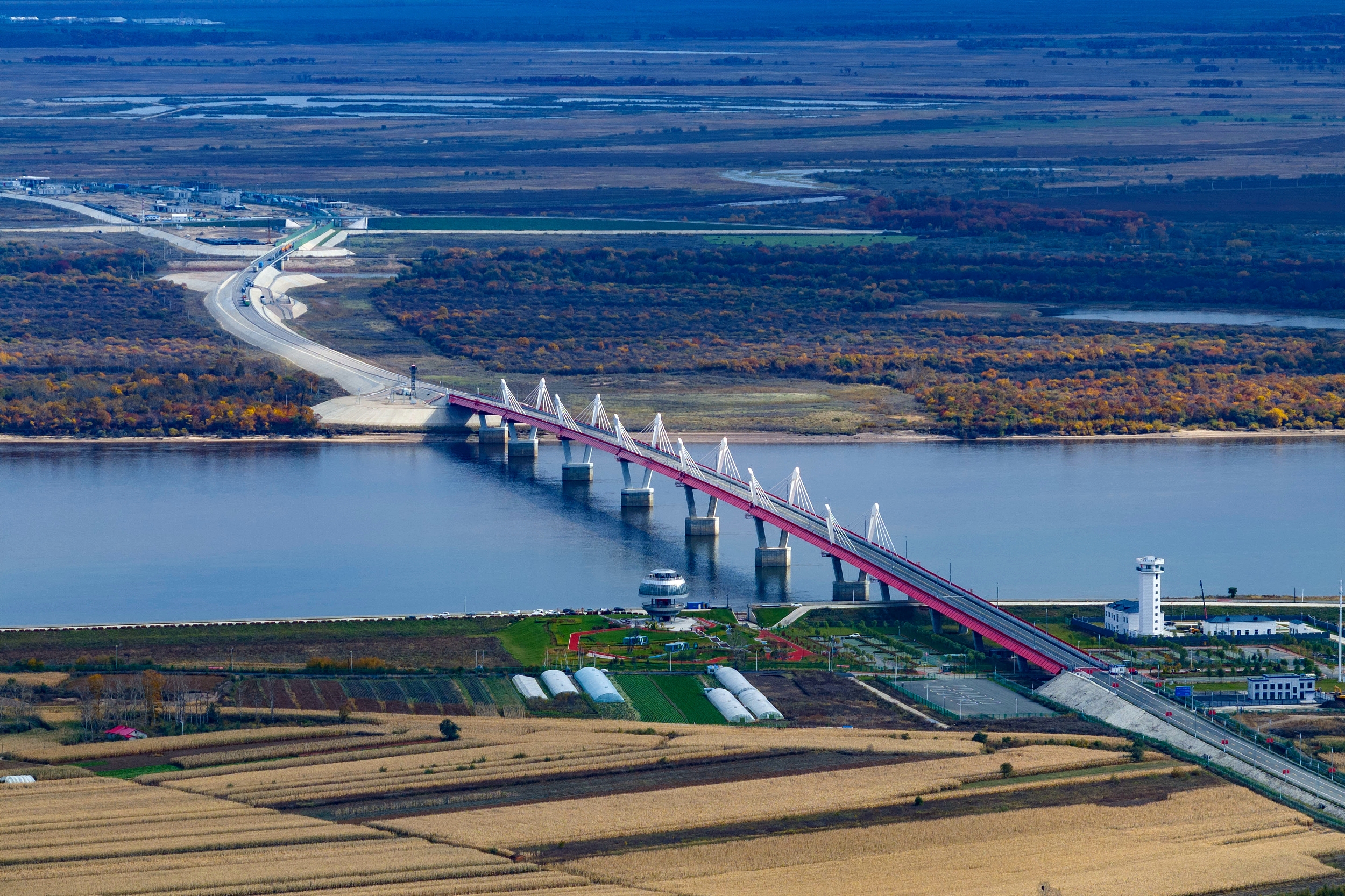Delivering Benefits to More Countries and People

Sightseeing area of Heilongjiang Bridge in Heihe, Heilongjiang province on September 30, 2023. (PHOTO: VCG)
Edited by QI Liming
The Belt and Road Initiative (BRI), "a Chinese solution to global development issues," has shown significant fruitful cooperation in the decade since its inception.
Contributions across Central Asia, Middle East and North Africa
With more than 3,100 projects across almost 150 countries, "[The] Belt and Road Initiative has lifted the Global South," David Dodwell, executive director of the Hong Kong-APEC Trade Policy Study Group, told South China Morning Post.
The BRI has contributed to the reshaping of relations between the rich and the poor, with the developing world's share of the global GDP rising in the process. China sees that infrastructure investment paves the way for development.
Thanks to the BRI, infrastructure is being built that would never have been built otherwise, and consequently, the economic prospects of many in the developing countries have improved.
Dodwell said the overriding priority for China in conceiving and developing the initiative was economy. "Reviving these once-vibrant ancient trade routes would not only lift the fortunes of many people, but also build stronger trading links across Asia and Africa," he said.
Positive impact on partner countries
According to a research report released this year by the South-South Research Initiative, the BRI has made positive impacts in several ways. The report, Impact Assessment on BRI on Partner Nations, says:
The BRI's contribution to increase the income of partner countries and the real income of participating economies reported great gains.
With the help of the BRI, some participating countries have expanded their foreign trade substantially. There are numerous examples of the BRI contributions to increasing foreign investments in participating countries.
The BRI has contributed massively to infrastructure improvement in the participating countries. BRI power and energy projects have helped a lot of countries overcome their energy crises.
The BRI has created new job opportunities and brought technical, social, educational and cultural benefits.
Expectations for BRI's second decade
According to the South-South Research Initiative, the BRI has the potential to be the world's largest development project and already covers more than 60 percent of the global population. In the coming decade, its scope and application is expected to grow.
The London-headquartered online publication Third Pole talked to experts from around the world about their expectations as the BRI enters its second decade.
Lina Benabdallah, associate professor of politics and international affairs at the Wake Forest University in the U.S., said the first batch of African countries signed BRI agreements as early as in 2017. Surveys conducted in 2021 by Afrobarometer, a pan-African research network, found 63 percent of the respondents believed China's economic and political influence on their countries to be positive. The political elite regarded the BRI's prospects of bringing in investments and infrastructure projects as attractive.
Since its inception, the BRI has increased its aid, loans and investments for developing countries.
Oyintarelado (Tarela) Moses, data analyst at the Boston University Global Development Policy Center, said, "Future BRI financing will likely change form and scope by refocusing more on financial and environmental sustainability, as it pairs with other initiatives like the Global Development Initiative."
Chen Yunnan, a research fellow of the Overseas Development Institute's Development and Public Finance program, said "Going forward, we may see a move towards more innovative means of green finance."
China's low-cost clean technology can be a huge boon for developing countries aspiring to low-carbon growth. This is an area where new development cooperation initiatives such as the Global Development Initiative, can play a role in tandem with the evolving BRI.
The BRI will continue to advance modernization in the participating countries, make economic globalization more dynamic, inclusive and sustainable, and ensure that more of the fruits of its projects will be shared more equitably by people across the world.


